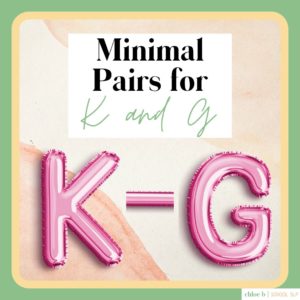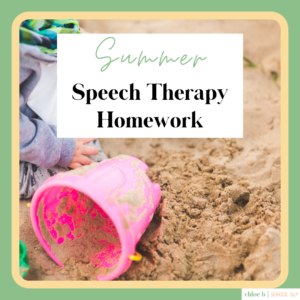 Who doesn’t love colorful and squishy play-dough? Kids of all ages are drawn to it and all of the possibilities it represents. Some enjoy the tactile and sensory exploration that is possible. (I personally find it to be a great stress/anxiety reliever!) Some of my kiddos with ADHD absolutely LOVE play-dough because it gives them an outlet to move and fidget as much as they need to.
Who doesn’t love colorful and squishy play-dough? Kids of all ages are drawn to it and all of the possibilities it represents. Some enjoy the tactile and sensory exploration that is possible. (I personally find it to be a great stress/anxiety reliever!) Some of my kiddos with ADHD absolutely LOVE play-dough because it gives them an outlet to move and fidget as much as they need to.
The great news is that you can make play-dough work for you too! You may be thinking “she’s crazy and that would be wayyyy to messy for my kids!”
BUT I promise that it can actually be a very productive tool! It’s all about how you use it. (And how you train your kids to clean up after themselves!)
Check out these 5 ways to incorporate clay into your therapy sessions. If you make it to the end, then you’ll also get my bonus tips on how to make play-dough COVID-19 friendly!
**This post may contain affiliate links at no extra cost to you. I will never recommend something that I don’t truly believe in or think will be helpful to you! **
5 Ways to incorporate Play-dough in Speech – Language therapy
1. Keep little hands busy during auditory bombardment
If you treat speech sound disorders, then you’re likely/hopefully/surely including auditory bombardment into your treatment sessions! Research shows that speech sound perception training is effective and is often used with production training (Rvachew, 1994; Rvachew et al., 2004; Rvachew, Rafaat, & Martin, 1999; Wolfe, Presley, & Mesaris, 2003).
In my therapy room, this looks like putting headphones on my client and letting them listen to a recording of me reading words that contain their target sound or minimal pairs. Kids don’t have to be closely listening, it’s more of a passive listening activity. That’s why play-dough is perfect! They can squish, build, and destroy to their heart’s content while making it productive!
2. Therapeutic play for language stimulation
Building / creating gives us SO many opportunities to work on language! If you are letting your client have free reign to create anything, then you can ask questions / create stories together that will stimulate so much language!
This is perfect for language modeling as you can describe what the child is doing or creating. It’s also fantastic for collecting speech/language samples. Need to work on fluency? Incorporate your goals in real-time as you’re having a conversation about your play-dough creations. Need to work on articulation at the conversation level? Bam. Create little animals or people with your play-dough and you’ve got endless language opportunities! You can tackle verbs, prepositions, pronouns, syntax, vocabulary, adjectives, turn-taking, – you name it!
3. Smash mats to target specific skills
Smash mats are SUCH a hit with my kids! It’s a great way to use play-dough in speech therapy. They love creating little balls and then getting to proudly smash them into the laminated piece of paper whenever they complete their task. It’s a great reinforcement – just enough fun to keep them engaged but not enough to distract from your overall purpose.
I made some super cheap smash mats for my TPT store that target pronouns and are Olympic/sport themed and my clients loved them! It targets subject, object, possessive, and reflexive pronouns! They’re only $1!
I also recently purchased preposition smash mats from Allison Fors that look like they will be a lot of fun!
4. USE as games to target receptive / expressive language in group therapy
My students are all about games and ask for them all the time. So I tend to turn everything into some kind of game! Using play-dough can be an easy way to turn basic receptive / expressive language tasks into a game. Here are some examples:
- Barrier games -Target prepositions, giving directions, following directions, asking questions, describing
- Mystery creations – Describe your creation (can even use EET components) so that your teammates can guess what it is
- Competitions – Who can make the longest/shortest/tallest etc. which is perfect for working on qualitative concepts or comparatives/superlatives
5. Have students create articulators to model correct placement/movement
Perfect for articulation goals! You can have your students create lips, teeth, or tongues to then demonstrate what each articulator should be doing when producing the target sound. If you have a mouth model, then you can remove the tongue and let your clients use their play-dough ‘tongues’ to demonstrate appropriate placement especially for the pesky /L/ and /R/ sounds!
This can occur at the beginning of your sessions as hands-on review of these concepts, or you can use them throughout the session as a visual/tactile cue.
COVID-19: HOW DO I USE PLAY-DOUGH SAFELY?
Great question! I had a little panic moment about a month ago when I realized that my usual ways of using play-dough in speech – language therapy sessions might not be possible anymore! But have no fear! You can still use play-dough safely. Here’s what I’ve been doing –
- Kids always wash hands or use hand sanitizer at the beginnings of my session. i supervise this to ensure they’re really covering every square inch of their little fingers!
- Table is sanitized with wipes.
- Each child is given their own personal play-dough can to keep throughout the semester/year. I write their names on the lids in permanent marker. You can buy the off-brand in a multi-pack for only a dollar at the Dollar Tree! It smells a little different but super soft/squishy!
- No sharing or touching each other’s play-dough.
- Kids clean up their own play-dough. Table and hands are sanitized again after!
TIP FOR GETTING KIDS TO CLEAN UP THEIR OWN PLAY-DOUGH: To minimize mess, you have to pick up every tiny little piece of play-dough. I teach my kids to create 1 big ball and use it to dab on the smaller pieces. The ball is sticky enough to easily pick up all of the tiny pieces quickly!
I hope you found these 5 ways to incorporate play-dough in speech – language therapy helpful! How do you use play-dough in your therapy sessions? I’d love to hear! Let me know in the comments below!
xxx *hugs*
Emily




